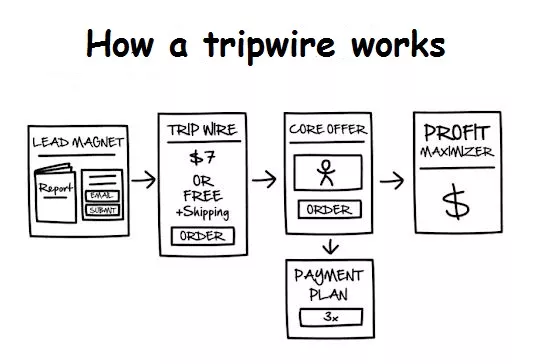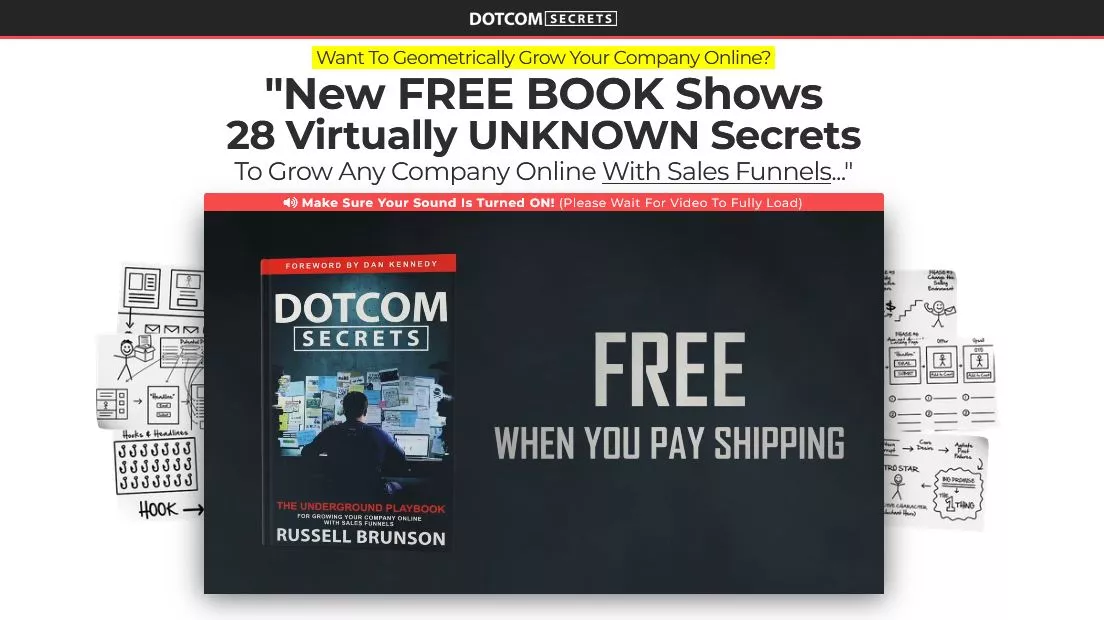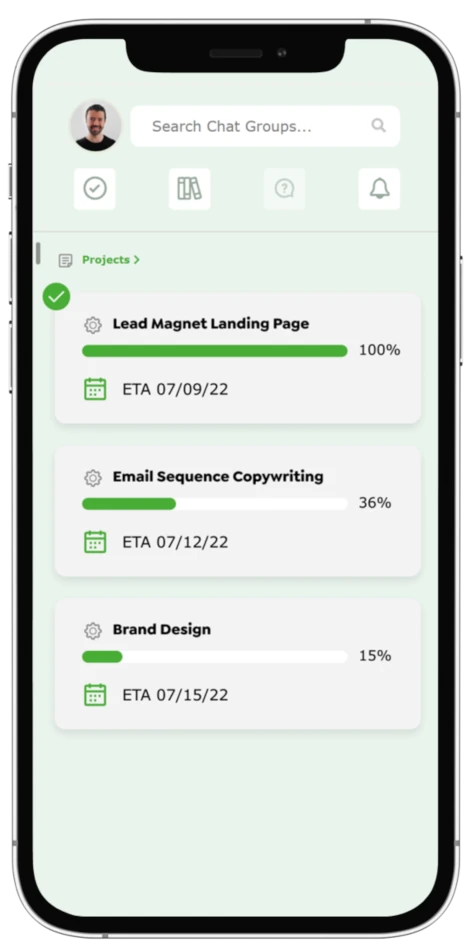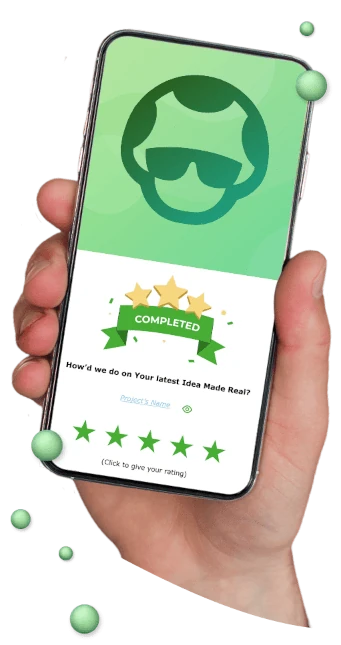What Is a Tripwire? Hint: Tripwires Can Transform Your Business Results
“You think that’s air you’re breathing?”
So said Morpheus in The Matrix when Neo comes to realize the “real world” wasn’t what he thought it was.
Have you ever had a similar realization that changed what you believed was possible?
Learning new marketing tactics – like what is a tripwire – can be an eye-opening experience.
I was chatting with a fellow entrepreneur on Skype recently. He was watching my updated webinar.
He mentioned my tips section about “smart” sales funnels and dynamic email segmentation / personalization. He said that for him, that was a “mind-blown” moment.
I felt the same way when I first learned about the concept of upsells and cross-sells.
My reaction was something like:
“You’re telling me that we can increase average revenue per sale by at least 50% … just by asking people at checkout?”
It turned around to be way more than 50% when we first started testing it way back in 2018. Plus… customers? They were actually happier because they got more value.
Today, I hope to blow your mind by teaching you the concept and conversion power of tripwires and how to apply it to your marketing/funnel to 10x sales on your core offering.

“What Is a Tripwire?
According to Salesforce Inc.,
“A tripwire is something small but meaningful that gets a prospect to convert, at least to some degree, to a real customer.’’
A tripwire is very similar to the self-liquidating offer we’ve covered in the past.
In fact, a product splinter is another name for a tripwire. The latter is just the more popular term.
To give you a better perspective, here’s another tripwire definition:
A tripwire is a small offer (usually between $5 - $50) sold to new email subscribers after opt-in. It’s meant to accelerate the buyer/seller relationship.
People might sometimes join your email list but might not want your core offer. Yes, even after you nurture the relationship.

Your first step should be to make a simple and affordable offer. Doing so will help those potential customers overcome the fear of buying from you and gain trust.
If you think about a relationship with a customer as a slope, the value ladder is a straight line. The customer will visit the website, subscribe to a newsletter, and then boom! That ladder goes way up at an almost 90-degree incline.
Then a customer may make a purchase for $100, $500, or even $1,000.

That’s all well and good; a lot of businesses successfully operate that way. But here’s the dilemma:
How do you service a larger market with automation services and still build trust? The answer? A tripwire.
A tripwire evens out that incline to convert more people and nurture a relationship. Now it’s sort of a 45-degree gradual incline in terms of the relationship.
You can then capture more of the market.
Basically, Tripwires help to gradually build buyer trust through an initial low-cost purchase. With trust established, you present higher-cost core offers.
According to Ryan Deiss, founder of DigitalMarketer.com, “People who purchased tripwires were 10 times more likely to purchase their core offer.”
If you’ve liked what you’ve read so far, you should subscribe to our newsletter!
Examples of Tripwires in Action
Disney Movie Club

The Disney Movie Club offers four movies for $1 with a membership.
The membership gets you access to their full library of movies. That offer is the tripwire leading to a subscription. It’s assumed that Disney Movie Club will charge your card after a month, and you’ll have to send the movies back.
That makes this offer a low barrier to entry in terms of starting a buyer/customer relationship.
DotComSecrets

Just to reiterate, a tripwire is supposed to be a standalone offer. It’s meant to be a stepping stone for building trust and adding value.
It’s like climbing up the value ladder, so to speak. I plan on covering the concept of the value ladder in a future blog post.
Russell Brunson from DotComSecrets talks about the value ladder in his book.
There are a lot of offers on the DotComSecrets homepage, but their tripwire is the free eBook, DotCom Secrets: The Underground Playbook For Growing Your Company Online.
The book presents a starting point to learn more about that. This is a front-end offer.
The idea is that people are going to read this book and learn strategies to grow their businesses. It’s an opportunity for Brunson to start a buyer/seller relationship. As I’ve said, it’s a substantial book.
For me, most of the content in the book is a refresher. Some of it is slightly different takes on various concepts. The idea is to upsell you on different products he offers, such as ClickFunnels or a coaching program.
This eBook is a great front-end offer. It’s a solid starting point for a very well-developed value that Brunson has in place.
BTB Boxing & Fitness

Australian gym, BTB Boxing & Fitness, does a decent job with their tripwire offer. They offer a 7-day trial for $7, which they call an ''introductory offer.''
For seven days, you can use the full gym like a member, take any class, and use the equipment without any restrictions.
It is a great way to try out their gym and see if you like the mood, instructors, gear, and environment.
The $7 tripwire offer gives you what members get for a short time. After that, you pay $39 per week as a full membership fee.
This low-risk way to test the gym first is designed to get prospects hooked into signing up for full membership. And the full membership money could keep rolling in for months or years.
BTB Boxing & Fitness also has $65 and $90 add-on offers. Those offers would eventually bring in more revenue in the long run.
Check out these additional tripwire examples to inspire you to create your own.
How to Make Your Own Tripwire Right Now
The easiest way to make your own tripwire is to look at your current core offer. Think of how you can splinter off a piece of that. This can be in the form of an eBook, for example, just like Russell Brunson did.
If you’re selling a service, what we used to do was to sell a “Project Roadmap.” We called this a “service slice” (same idea as a product splinter).
This would cost $300 and ensured we got paid for the time we put into planning the proposal. It also created an association between us delivering our expertise and our time. It made it easier for us to make our core sale.
So look at what you’re doing now. See if you can splinter it, package it, and sell it off to new email subscribers. If you are selling services, you’d want to sell the roadmap after the customer opts in and makes a consultation.
For digital marketers, online entrepreneurs, or info-product marketers:
Place the tripwire right after someone opts into your email list. Make sure to include a risk reversal, like a 30-day money-back guarantee.
Common Tripwire Mistakes to Avoid
Be careful not to make these common mistakes with your tripwire offer:
- Pricing too high - Keep it under $50. Going higher could hurt conversions.
- Offering too much for free - Give some value but not too much. You should save that for the core offer.
- Forgetting follow-up - Check in after purchase to start a relationship.
- Not linking to core offer - Clearly show how tripwire leads to the main products.
Some other tripwire mistakes to avoid are:
- Making it too complicated
- Bad sales page design
- Weak value proposition
- No clear next steps
Tripwires fail when people don't buy them or when buyers don't convert later. Avoid these pitfalls to maximize success!
The key is giving some value at a low cost while leaving them wanting more from your core offerings. Do this right, and the tripwire smoothly ushers buyers along your sales funnel.
Conclusion
Let’s wrap it all up.
A tripwire “ignites” the buyer/seller relationship and increases core offer purchases. In other words, invest a little money and get some value.
That builds trust and makes them more open to a future purchase, assuming it delivers value.
To review:
- The price of a tripwire is typically between $5 and $50. Keeping the price low (but the value relative to the price high) entices customers to make bigger purchases once they gain trust in you.
- A tripwire is a useful way to persuade shy or reluctant customers to finally buy your core offer. Even if they would have refused before, likely because of a “trust gap.” The tripwire is a low-perceived-risk way to bridge this gap.
- An eBook is a decent starting point if you want to make your own tripwire.
- Don’t forget to offer a risk reversal after opt-in. This further builds the trust between the customer and your brand.
Have you ever used a tripwire before?
What were the results?
Are you thinking of ways to create tripwires for your own business?
Let me know in the comments below.
Keep AutoGrowin’, Stay Focused,

1. https://www.salesforce.com/ca/blog/2016/04/art-of-tripwire-sales.html
2. https://www.paldesk.com/how-to-create-a-value-ladder-to-maintain-clients
3. https://www.nichepursuits.com/tripwire-funnels

















